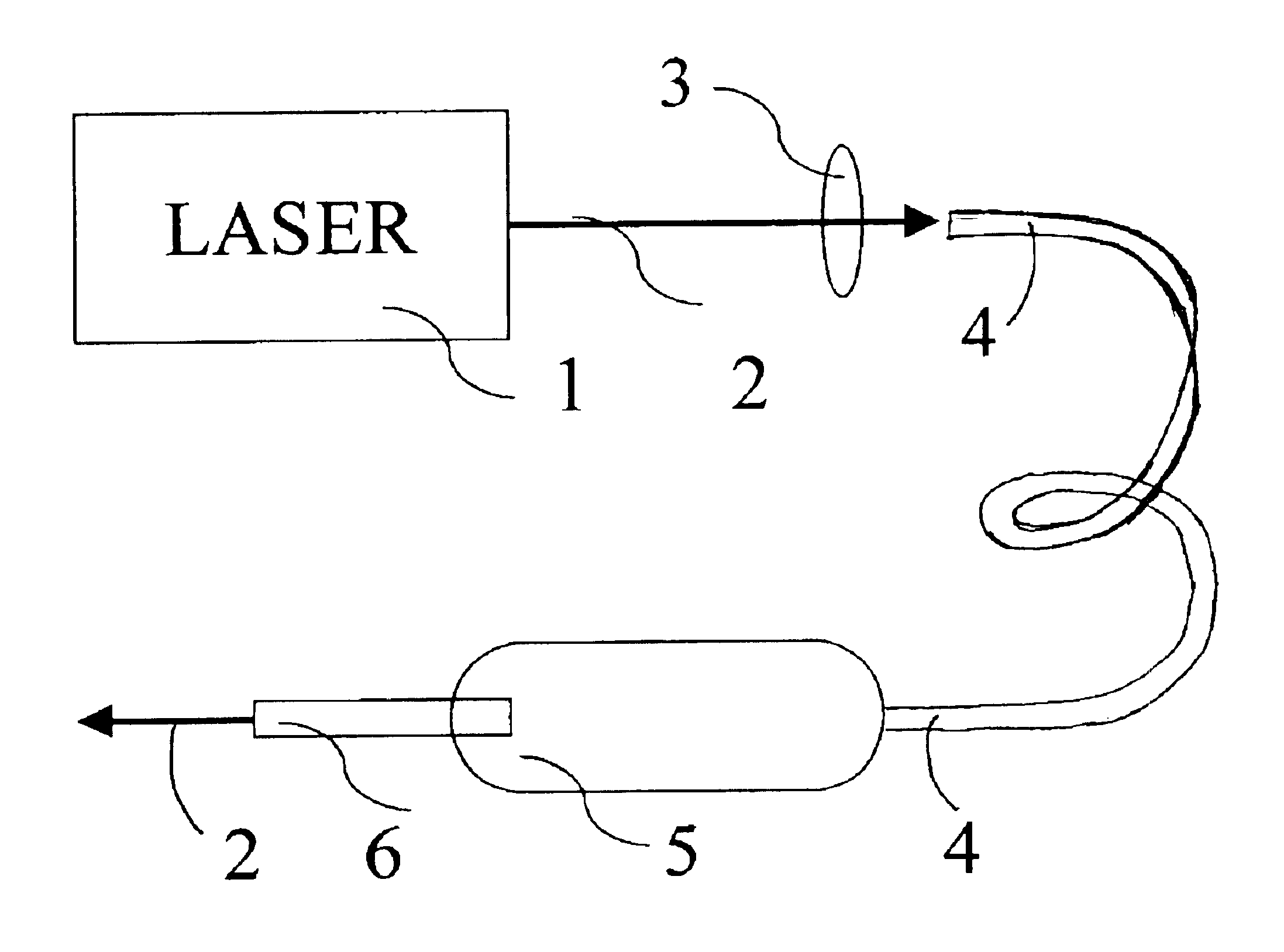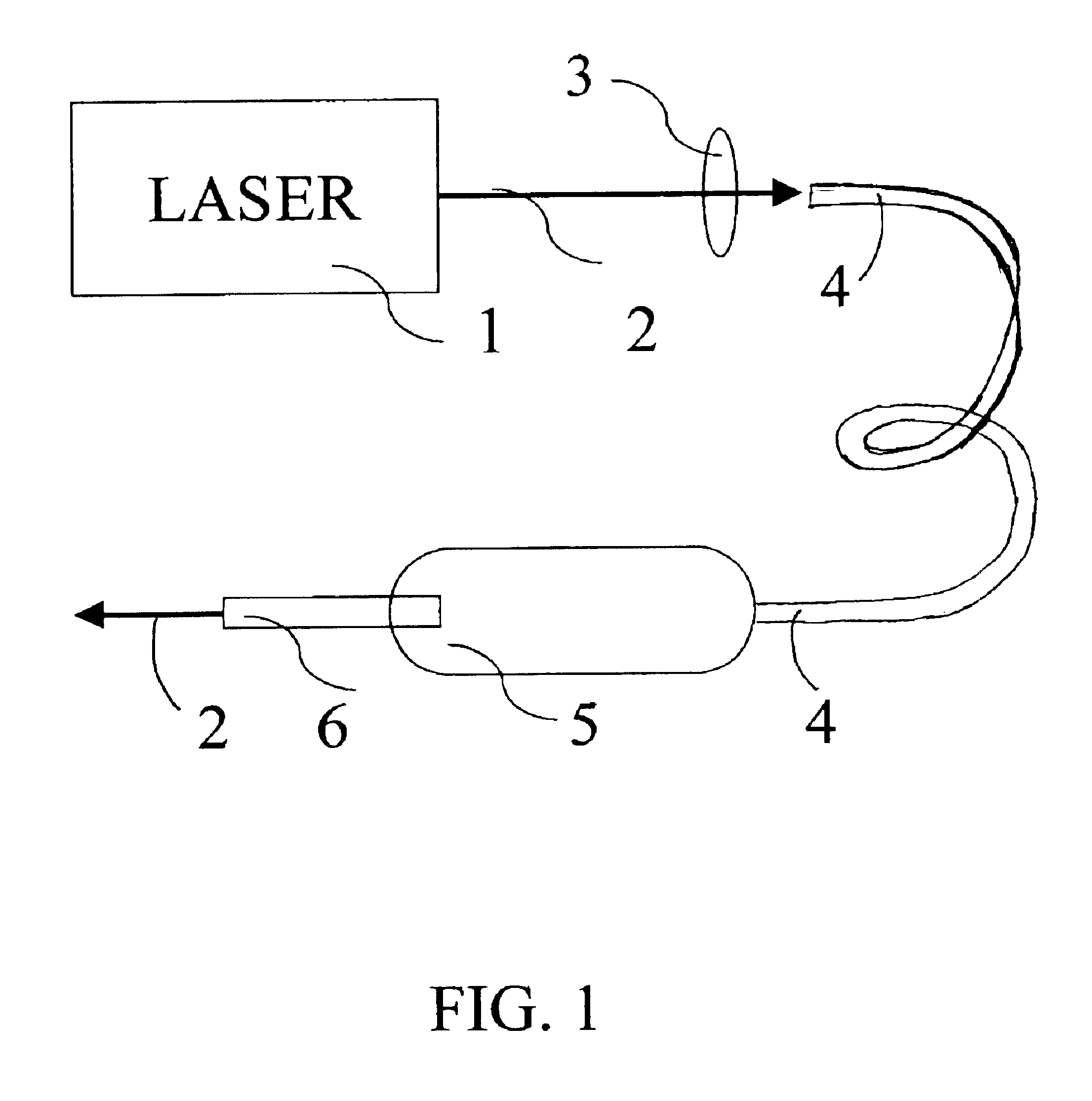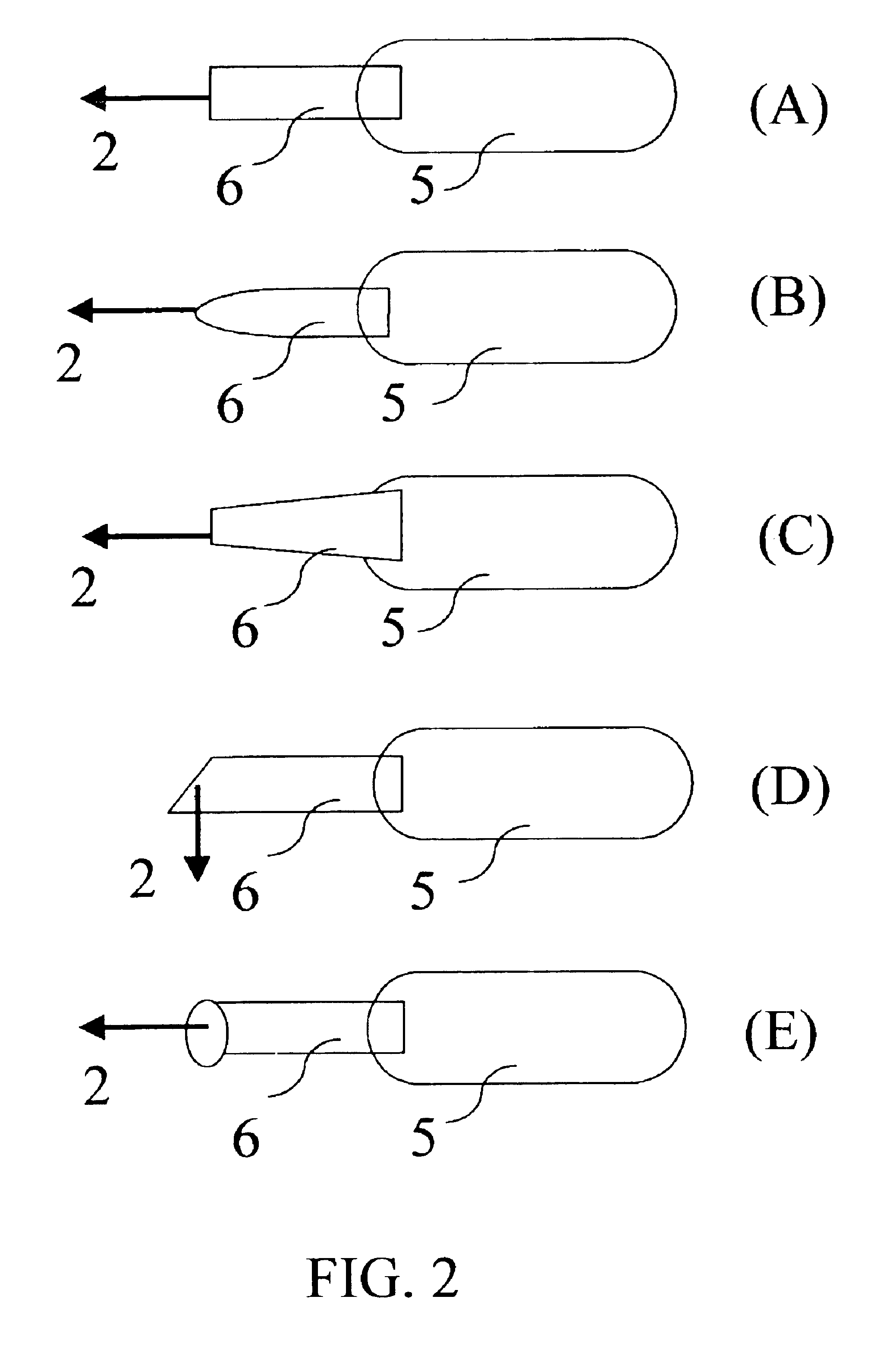Apparatus and methods for the treatment of presbyopia using fiber-coupled-lasers
a technology of fiber-coupled lasers and presbyopia, which is applied in the field of presbyopia treatment methods and equipment, can solve the problems of myopia, hyperopia, and the above-described prior arts of lasers to reshape the corneal surface curvature, and achieve the effects of reducing the risk of myopia, hyperopia, and reducing the risk of presbyopia
- Summary
- Abstract
- Description
- Claims
- Application Information
AI Technical Summary
Problems solved by technology
Method used
Image
Examples
Embodiment Construction
Referring to FIG. 1, a surgical laser system in accordance with the present invention comprises a basic laser 1 having wavelength 2 coupled by a focusing lens 3 to a fiber 4 which is connected to a hand-piece 5 and a fiber tip 6. The focusing lens 3, fiber 4 and fiber tip 6 are highly transparent to the wavelength 2 of the basic laser.
Still referring to FIG. 1, according to the present invention, the preferred embodiments of the basic surgical lasers for presbyopia correction procedures shall include: (a) infrared lasers having wavelengths range of about (1.4-3.2) microns including but not limited to solid state lasers of Er:glass, Ho:YAG, Er:YAG, Er:YSGG, infrared gas lasers, solid-state lasers converted by optical parametric oscillation (OPO); (b) ultraviolet (UV) lasers having wavelength range of about (190-355) nm, such as ArF (at 193 nm) and XeCl (at 308 nm) excimer lasers and solid-state lasers using harmonic generation form solid-state lasers of Nd:YAG, Nd:YLF and Alexandrite...
PUM
 Login to View More
Login to View More Abstract
Description
Claims
Application Information
 Login to View More
Login to View More - R&D
- Intellectual Property
- Life Sciences
- Materials
- Tech Scout
- Unparalleled Data Quality
- Higher Quality Content
- 60% Fewer Hallucinations
Browse by: Latest US Patents, China's latest patents, Technical Efficacy Thesaurus, Application Domain, Technology Topic, Popular Technical Reports.
© 2025 PatSnap. All rights reserved.Legal|Privacy policy|Modern Slavery Act Transparency Statement|Sitemap|About US| Contact US: help@patsnap.com



